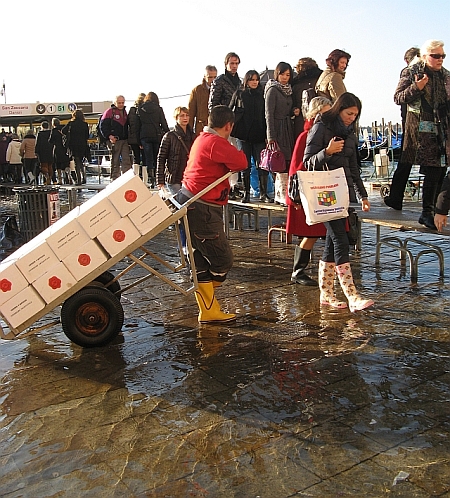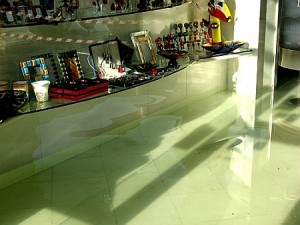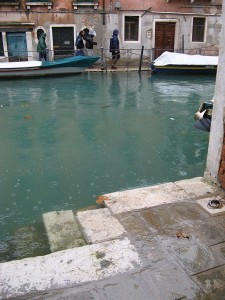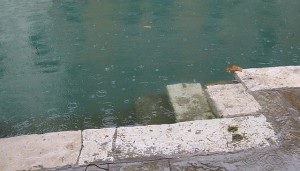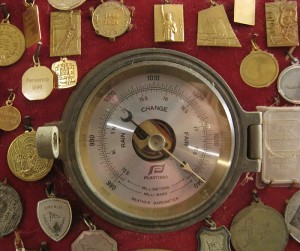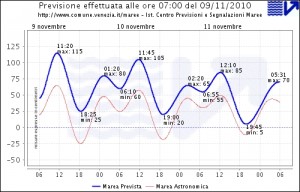What is it about December that seems to call the acqua alta with a siren song of irresistible allure? Other people are already thinking about Christmas, but at the moment (6:00 AM) I am thinking about where to put all the stuff that’s on the floor for when the tide tops the predicted 140 cm.
The maximum is forecast for 8:45 and maybe, seeing that is very little wind, and it’s from the north, just maybe we will escape having the lagoon pay us a personal visit. Then again, maybe not.

I mention this for two reasons.
One, because a year ago, the first time the tide reached that height, it did indeed come indoors. Of course we blocked the entrance, which I guess works for some people but for us it only slowed the arrival of the old H2O. And the barrier did nothing, as you may recall, to stop the water from coming in through the wall under the kitchen sink, or up through a fissure in the floor.
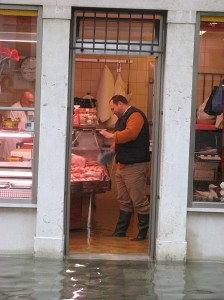
Two, because I don’t want you to think that when I scoff at the chronic drama suffusing reports of high water, that I am doing so because I am at no risk of having to sweep the lagoon out of the house, then wash the floors with fresh water.
I scoff because washing the floors is a good thing and I should do it more often. And also because last week we put the refrigerator and the washing machine up on wooden beams, three inches above the floor. Yesss!
And I scoff especially today because last night I read the weather news from Eastern Europe and it’s a goddam disaster out there. An Arctic front has assaulted every country from Germany to Albania, visiting blizzards, icy rain, and record sub-zero temperatures on millions of people. People trapped in their cars all night on the highways in the snow, people freezing to death, major airports closed, hundreds of cancelled flights. Thousands evacuated from their flooded houses, and I mean really flooded; some of these dwellings are now ruined by more than three feet of water inside.
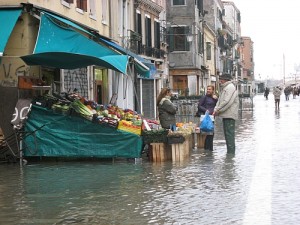
And then we read the forecast for Venice: Acqua alta. I have to tell you, after the deafening symphony of catastrophe from out there, “high water” sounds like a little tune played on a baby’s xylophone.
An inch of water on our floor for two hours, if that’s what transpires, doesn’t deserve more than a few deep sighs. Of course it will be higher in the Piazza San Marco — of course it will be inconvenient for people going to work (the tourists love it, so they don’t count) and will require walking on narrow walkways (I mean, if you haven’t already figured out that you needed to put on boots), and the vaporettos will all be sent up the Grand Canal for a couple of hours because they can’t get under two of the bridges on their route, so people will have to walk somewhat further than they normally do to get from their usual vaporetto stop to wherever they’re going. Terrible.
The emergency forces are out all over Europe trying to save people’s lives. Here, by noon it’s all going to be over.
It’s almost embarrassing.




